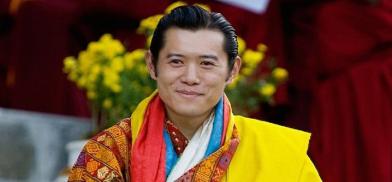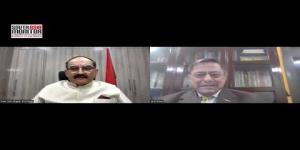A success story: Good leadership, timely responses help Bhutan contain COVID-19
Bhutan’s energetic and collective response under the personal leadership of King Jigme Khesar Namgyel Wangchuck helped to deal with the crisis. Bhutan has the advantage of both the Prime Minister Lotay Tshering and Foreign Minister Tandi Dorji being medical doctors with a background of public health, writes Shubha Singh for South Asia Monitor

Bhutan is among a handful of nations in the world that have been able to contain the spread of the novel coronavirus infection. Bhutan’s first COVID-19 positive patient was diagnosed on March 5 when it was still early days for the spread of the disease and the World Health Organisation (WHO) was still almost a week away from declaring it a global pandemic. But decisive action and a proactive approach to tackling the outbreak restricted the number of cases to 11 positive cases, five recovered and zero deaths as on May 11, 2020.
Landlocked between two of the world’s most populous nations, China where the virus outbreak began and India, with whom Bhutan has an open, porous border, the Himalayan kingdom with a population of 750,000 people faced a challenging situation when the crisis began. A small country dependent mainly on tourism with limited hospital facilities, few doctors, especially medical specialists, and facing a shortage of testing kits and personal protective equipment, had a difficult task at hand. Despite all the constraints, how has Bhutan been successful in dealing with the situation and keeping down the number of positive cases?
The Bhutanese government was quick to respond to the virus that was spreading rapidly in many countries. It took immediate action to limit the impact. Within a day of detection of the first case, it had barred foreign tourists from visiting Bhutan on March 6.
Bhutan’s energetic and collective response under the personal leadership of King Jigme Khesar Namgyel Wangchuck helped to deal with the crisis. Bhutan has the advantage of both the Prime Minister Lotay Tshering and Foreign Minister Tandi Dorji being medical doctors with a background of public health, while Health Minister Dechen Wangmo has a master’s degree in public health epidemiology which would have helped in providing well-informed decision-making at the time of the pandemic. It also has a universal health care system.
Bhutan went into a partial lockdown, closing its borders, shutting down schools and educational institutes, restricting public gathering, work from home wherever possible and creating awareness for the need for social distancing in public places. Bhutan imposed a mandatory 21-day quarantine in a designated quarantine facilities for all those returning to Bhutan and testing of all quarantined persons before they were discharged under a National Preparedness and Response Plan.
Bhutan’s patient zero or the first positive patient was a 76-year old American tourist, who had travelled to Thimphu from India on March 2. He had developed a fever and was taken to hospital where he tested positive on March 5. His travelling partner tested positive for COVID-19 on the last day of a 14-day quarantine period after three earlier tests had been negative. The quarantine period was later extended to 21 days and release was only after testing negative.
Mapping and tracing the tourists’ movements revealed that they had travelled with ten other passengers on the incoming flight. All the passengers were quarantined as well as a driver and guide who had come in contact with them. Another 90 contacts were identified, including airport staff and hotel employees, who were advised to home quarantine themselves.
Thimphu was then faced with repercussions of Bhutanese citizens returning from countries where the COVID-19 cases were increasing rapidly. A day before India imposed a total lockdown, Bhutan had taken the decision to close the country’s borders on March 23. Only essential supplies of food, medicine and fuel were allowed to enter the country. Bhutan shares an open border with India with many people travelling across the border every day for work or even shopping. There are also a number of Bhutanese living and working in Indian towns across the border. The borders were sealed and all formal and informal crossing points were monitored by security personnel and volunteer from neighbouring villages.
The government made arrangements to bring back Bhutanese nationals living, studying or travelling abroad. About 5,000 Bhutanese living in adjoining districts of West Bengal was brought back to Phuntsholing town. Special Druk Air flights brought back more than 300 Bhutanese studying in foreign countries, those working in other parts of India and in the tourism sector in the Maldives.
A mass awareness programme was undertaken to educate people on hygiene and safety precautions to fight the pandemic.
Bhutanese have a strong community consciousness. Volunteers helped army soldiers build bamboo quarantine facilities in the villages, especially in the south where people evacuated from across the border were lodged. Food and other supplies were provided to all those under quarantine. The king travelled to the districts to inspect preparations.
A National COVID-19 Response Fund was set up with all members of the two houses of Parliament donating a month’s salary. Later donations came in cash and kind, from local businesses, hotels offering quarantine rooms and farmers donating food crops.
Bhutan’s timely and effective measures of closing the border, adequate testing and quarantining all arrivals have helped to stabilize the situation and prevent any community transmission of the coronavirus within the country.
(The writer is a foreign policy and strategic affairs commentator. The views expressed are personal. She can be contacted at shubhasingh101@gmail.com )










Post a Comment